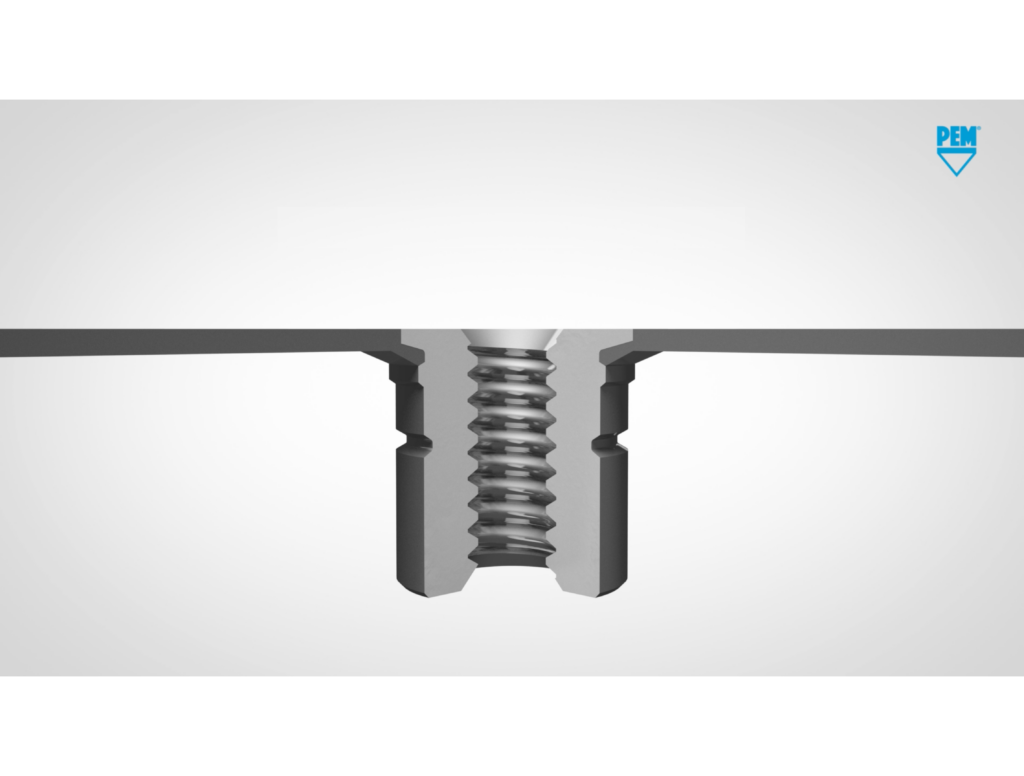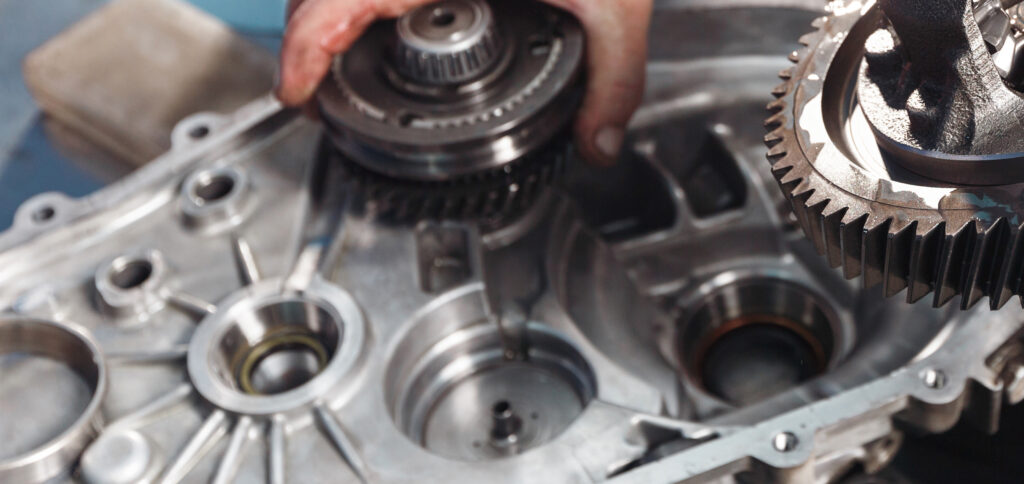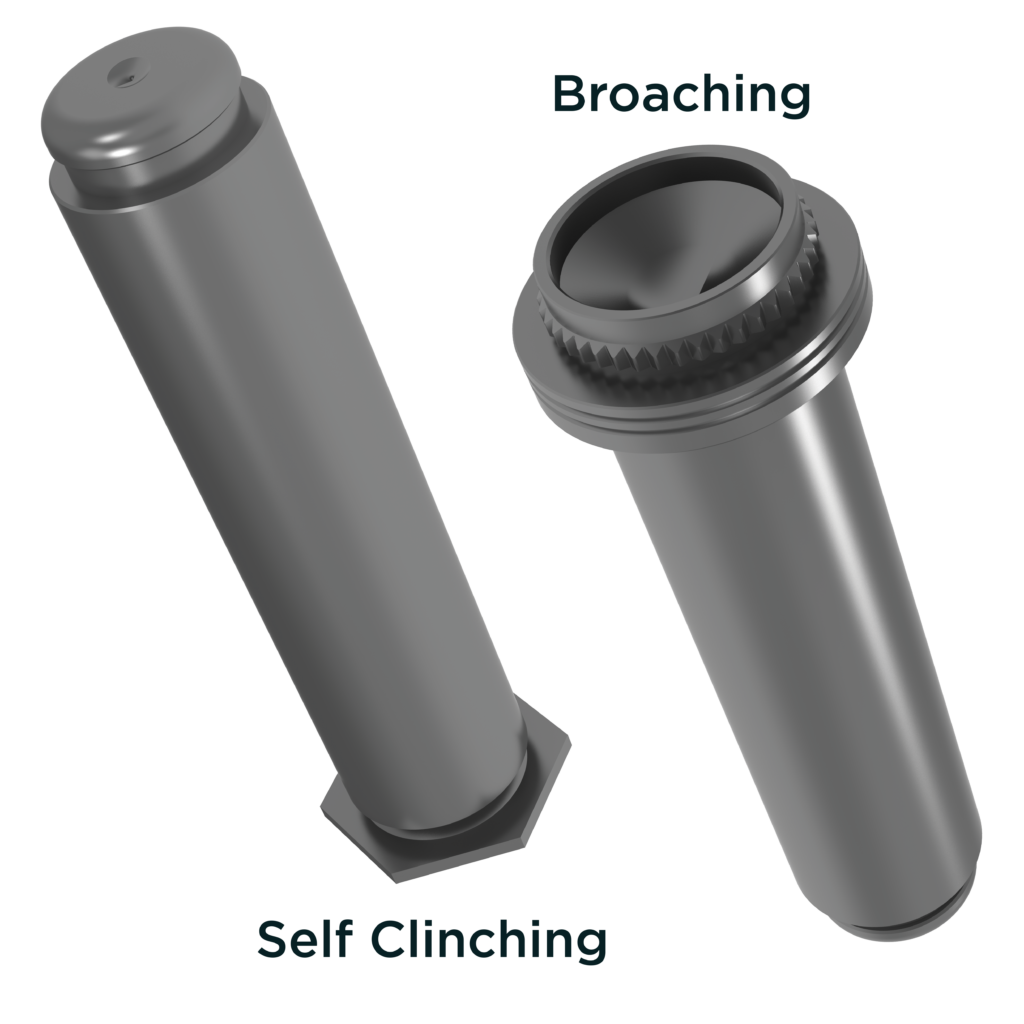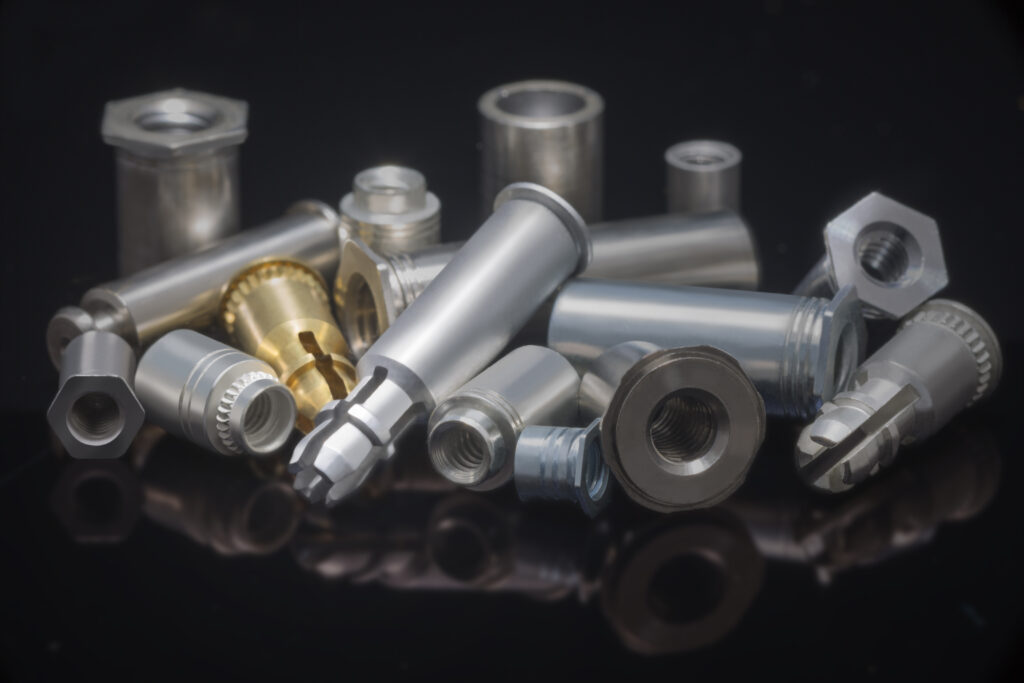
Table of Contents
Product Pages
Standoffs
KEYHOLE® Standoffs
SNAP-TOP® Standoffs
Nuts
Clinch Nuts
Floating Nuts
Blind Nuts
Flush Nuts
Locking Nuts
Rivet Nuts
Studs
Locating Pins
Captivated Screws
Simple Screws
Spring-Loaded Screws
Knob Cap Screws
Threaded Inserts
Press-In Inserts
Molded-In Inserts
Ultrasonic/Heat-Staking Inserts
Compression Limiters
Specialty Fasteners
Cable Tie Mounts
TACKPIN®
Panel-to-Panel Fasteners
Right Angle Fasteners
Attachment Technologies
Overview
Cable tie mounts have a rectangular footprint and unique clinching feature that is shared only with the right-angle fasteners. The short sides have both a flange head and an undercut, allowing the piece to clinch into a rectangular, punched hole. This rectangular base hosts a horizontal through-hole that accepts a zip tie perpendicular to the length of the part.
Compared to a rotationally symmetric part, the cable tie mount has two-fold symmetry (180°). The orientation of the rectangular holes will determine the direction of the installed parts, so the application requirements must be considered early in the manufacturing process. Given the square shapes in this part, they are commonly metal injection molded or sintered from metal powder, typically stainless steel.
Application
Roadside construction message boards house the large LED screens and their electronics inside a thin metal enclosure, which can be opened to allow an operator to repair or replace faulty components. With many wires involved in this assembly, cable management becomes a concern. Cable tie mounts installed in the sheet metal housing provide clear attachment points to organize the cables with zip ties in a configuration intended by the manufacturer, with the orientation of these attachment points determining the path of cables.
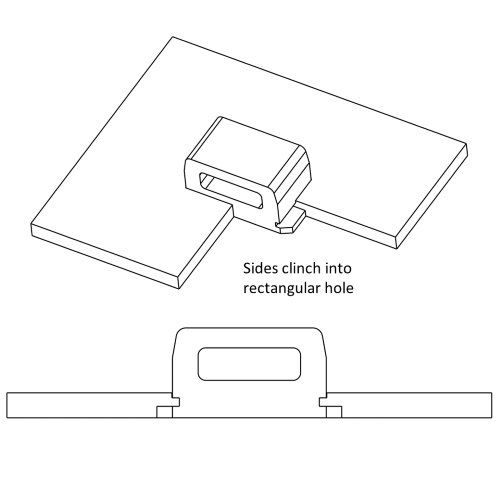
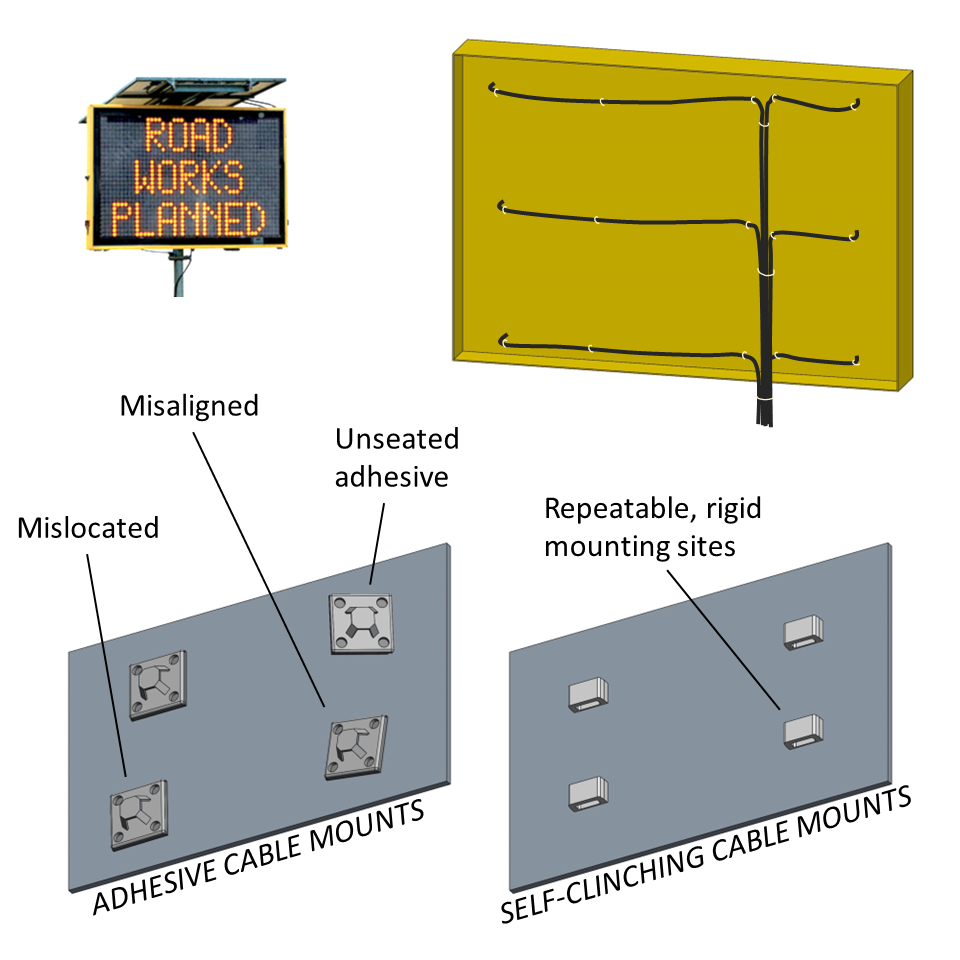
Comparison of secondary, adhesive cable tie mounts and preinstalled self-clinching cable tie mounts.
Alternative Solutions
Cheaper, faster solutions like plastic mounts with adhesive backing are a common alternative to self-clinching mounts, as they allow for more adaptable cable management across applications. This greatly simplifies the manufacturing process but places more responsibility on whoever is organizing the cables since they can put those mounts wherever they want, increasing the risk of problems due to misconfiguration. Additionally, the adhesives may not survive intense thermal cycling, like that which happens on roadways in hot climates where construction equipment bakes in the sun. Another alternative is to punch parallel holes to fasten zip ties directly to the panel of the housing, which helps to indicate proper cable configuration with hole orientation. However, this leaves the enclosure more exposed to the environment, making it a less desirable solution in inclement weather conditions.
Relevant products from PEM:
See size and application options in our Product Finder:
To learn more about PEM cable tie mounts, visit the TD Datasheet.
Have a project?
Let’s get started.
Talk to us about creating a custom part, tool or process. We are equipped to help you to take on and solve your biggest engineering challenges.
Talk to us about creating a custom part, tool or process. We are equipped to help you to take on and solve your biggest engineering challenges.

Looking for CAD Downloads?
Access to the original PEM Catalog and CAD downloads.
Have a question?
Talk to an Engineer.
See what’s possible.
Connect with a PEM® engineering expert today and discover a reliable, cost-effective fastening solution for your challenging applications.
Or Call Us: 1-800-342-5736


